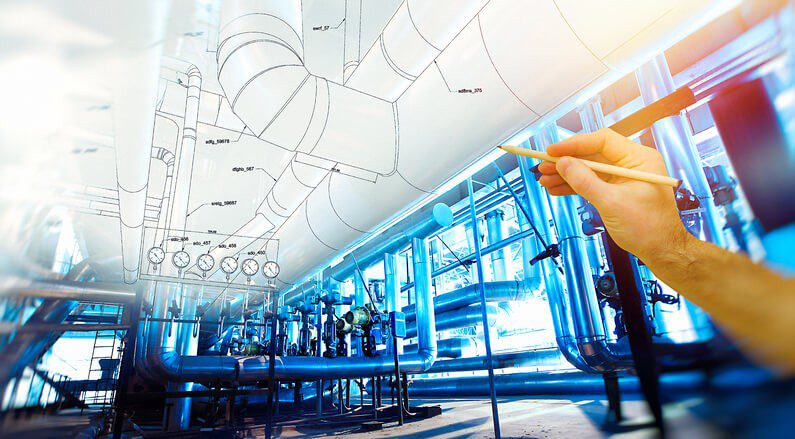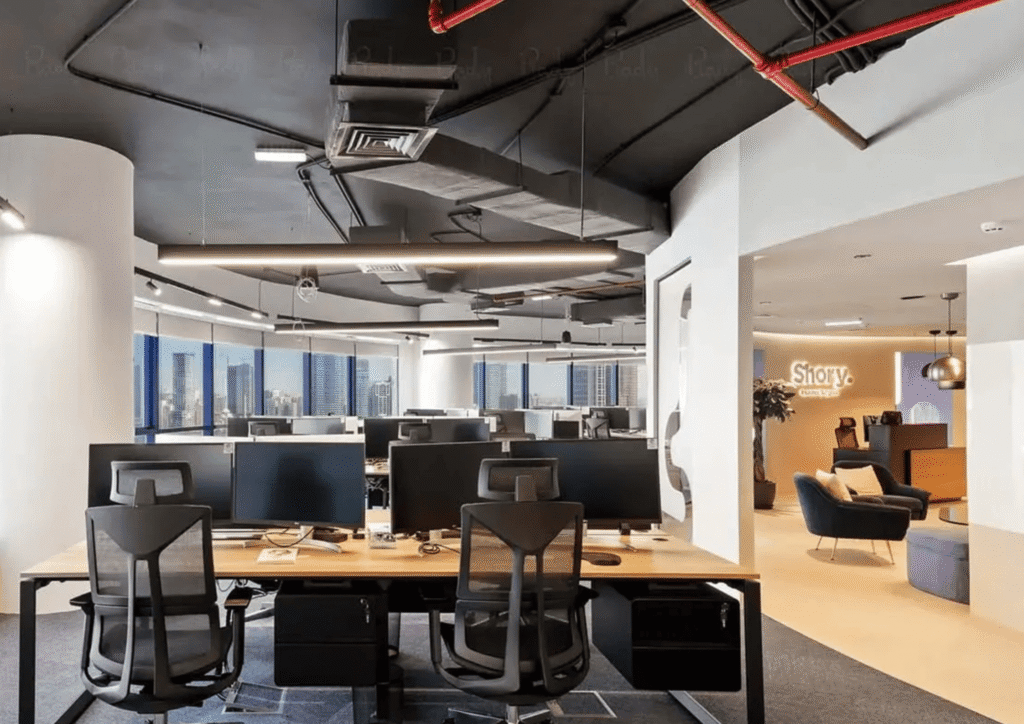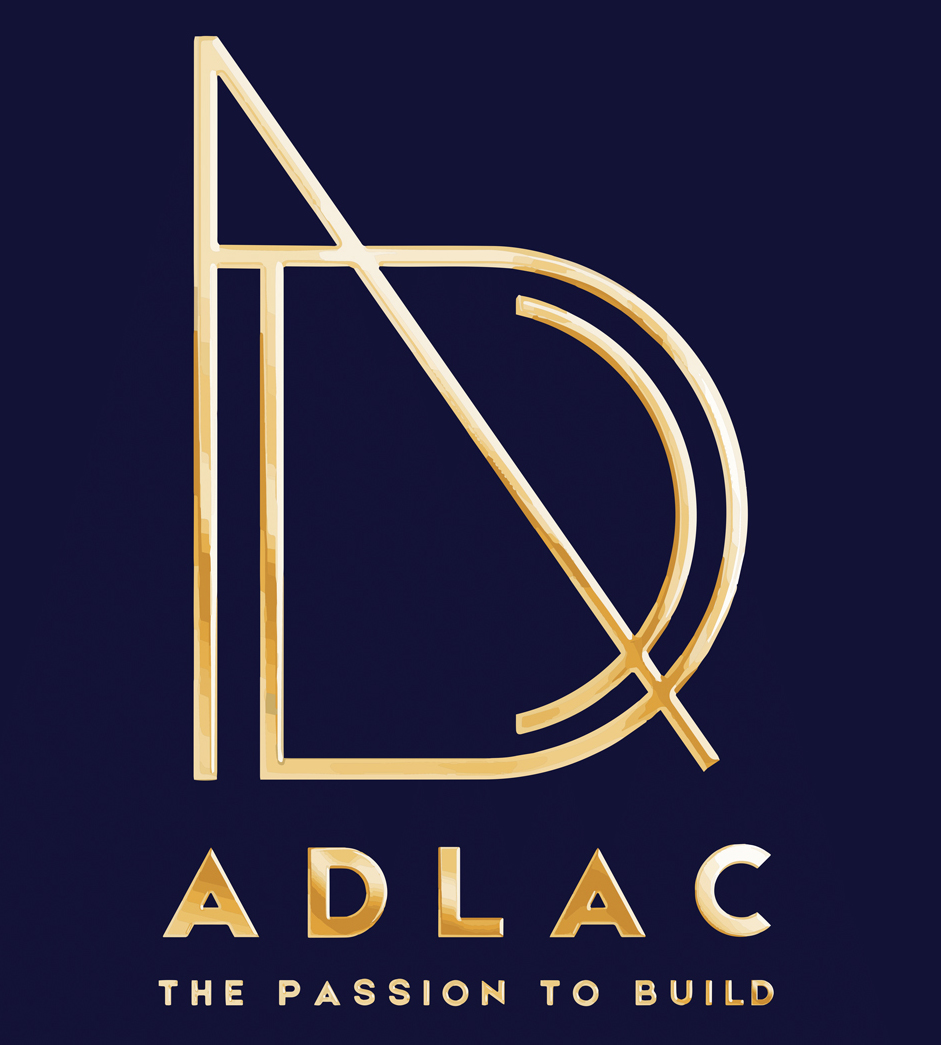The Importance of MEP Systems in Modern Buildings

The Hidden Backbone of Modern Infrastructure Introduction Every modern building — whether a towering skyscraper in Dubai, a shopping mall in Abu Dhabi, or a residential villa in Sharjah — depends on one essential factor for comfort, safety, and functionality: MEP systems.MEP stands for Mechanical, Electrical, and Plumbing, and together these systems form the heart of any structure. Without efficient MEP design and implementation, even the most stunning architectural masterpiece would be unlivable and inefficient. In the UAE’s fast-paced construction landscape, MEP systems play a critical role in energy efficiency, sustainability, and comfort, ensuring buildings meet international safety and performance standards. 1. What Are MEP Systems? MEP systems combine three major engineering disciplines that ensure the smooth functioning of a building’s infrastructure. Mechanical Systems: Cover heating, ventilation, and air conditioning (HVAC), ensuring indoor air quality and climate control. Electrical Systems: Include power supply, lighting, security systems, and communication networks. Plumbing Systems: Handle water supply, drainage, waste management, and fire suppression systems. Together, they ensure that occupants enjoy comfort, convenience, and safety in any modern space. 2. Why MEP Systems Are the Heart of Every Building A building without efficient MEP systems is like a body without vital organs. These systems make structures habitable, functional, and sustainable.From controlling temperature to providing clean water and electricity, MEP ensures that every building operates smoothly behind the scenes. 3. The Role of MEP in Energy Efficiency Energy costs are a major concern in the UAE, especially due to the region’s hot climate. A well-designed MEP system can cut energy consumption by 20–40% through smart HVAC systems, energy-efficient lighting, and advanced insulation methods. For instance, modern chillers, motion sensor lighting, and intelligent ventilation systems reduce power usage while maintaining comfort — essential for large commercial and residential projects. 4. MEP Systems and Building Safety Safety is a top priority in every UAE construction project. MEP systems ensure: Fire detection and suppression through alarms, sprinklers, and smoke extraction. Emergency power backup for lighting and elevators. Proper ventilation to avoid carbon monoxide buildup. These systems are critical for compliance with UAE building codes and for safeguarding both property and lives. 5. Importance of MEP in UAE Construction Projects The UAE’s climate and architectural diversity require advanced MEP planning. Whether it’s cooling massive commercial spaces or ensuring water efficiency in residential towers, MEP engineers design solutions tailored to local needs. Cities like Dubai and Abu Dhabi have also implemented green building regulations that demand energy-efficient and sustainable MEP systems — aligning with the nation’s goal of achieving net-zero emissions by 2050. 6. MEP Systems in Sustainable and Smart Buildings As sustainability becomes central to UAE’s development vision, MEP design plays a key role in achieving LEED and Estidama certifications.Smart MEP systems integrate automation technologies, enabling: Real-time energy monitoring Predictive maintenance for HVAC and electrical systems Automated lighting and temperature controls These innovations help reduce energy waste while maintaining comfort and performance. 7. Common MEP Challenges and How to Overcome Them Despite technological advancements, MEP projects can face challenges such as: Design clashes between different systems High maintenance costs Limited coordination between contractors To overcome these, many UAE firms use Building Information Modelling (BIM) — a digital tool that enables precise planning, clash detection, and real-time collaboration between architects, engineers, and contractors. CONCLUSION MEP systems are more than just pipes, wires, and ducts—they’re the lifeblood of modern buildings. In the UAE, where innovation and comfort meet sustainability, effective MEP design ensures buildings are energy-efficient, safe, and future-ready.From luxurious skyscrapers to sustainable housing developments, every successful project depends on the precision and expertise behind its MEP systems. Frequently Asked Questions What are the main components of MEP systems? The three main components are: Mechanical Systems: HVAC and ventilation. Electrical Systems: Power distribution, lighting, and fire alarms. Plumbing Systems: Water supply, drainage, and sanitation. Together, these ensure efficient building operations. How does MEP improve building efficiency? MEP systems enhance efficiency by reducing energy consumption, maintaining optimal air quality, and ensuring effective water usage. Properly designed MEP systems lower operating costs and environmental impact. Why is MEP important in the UAE? Due to the UAE’s extreme temperatures and sustainability goals, MEP systems are crucial for cooling, water conservation, and energy management. They help meet green building standards like LEED and Estidama.
Top Trends in UAE Interior Fit-Outs

The Booming Interior Fit-Out Industry in UAE Introduction The UAE has become a global hub for innovation, luxury, and architectural brilliance. From Dubai’s glittering skyscrapers to Abu Dhabi’s modern villas and Sharjah’s cultural spaces, the interior fit-out industry plays a major role in shaping the nation’s aesthetics and comfort. In recent years, there has been a remarkable shift in how people design and experience spaces—moving towards sustainability, technology integration, and cultural fusion. If you’re a homeowner, architect, or business owner looking to stay ahead of the curve, understanding the latest interior fit-out trends in the UAE can help you make smarter design choices that reflect both style and functionality. 1. Sustainable and Eco-Friendly Designs Environmental consciousness is no longer an option—it’s a responsibility. In the UAE, fit-out contractors and designers are adopting eco-friendly practices to reduce waste and energy consumption. Use of Recycled and Locally Sourced Materials Materials such as reclaimed wood, recycled metal, and eco-friendly paints are becoming popular. They not only minimize environmental impact but also add a unique, rustic appeal to interiors. Energy-Efficient Lighting and Systems With UAE’s hot climate, energy-efficient lighting (like LED) and smart HVAC systems are essential. These technologies ensure lower electricity usage and greater indoor comfort, aligning with green building standards like LEED and Estidama. 2. Smart Interiors and Technology Integration Technology is at the heart of modern UAE living. Today’s interiors are designed to adapt to human behavior using smart devices and automation systems. IoT-Powered Spaces From lighting and curtains to air conditioning and security, IoT (Internet of Things) allows users to control everything with a smartphone or voice command. This trend is particularly strong in high-end residences and commercial spaces. Smart Workspaces With hybrid work models on the rise, many offices are being redesigned to include smart conference rooms, wireless charging stations, and AI-based environmental controls that improve productivity and comfort. 3. Minimalism with a Touch of Luxury While minimalism emphasizes simplicity, UAE designers are redefining it by combining clean layouts with luxurious accents like marble, brass, and gold finishes. This approach creates interiors that feel open, elegant, and sophisticated without being over-decorated. Functional Aesthetics Every piece of furniture serves a purpose while maintaining style. Think hidden storage, foldable elements, and modular designs—perfect for modern apartments and villas in Dubai and Abu Dhabi. 4. Biophilic Design – Nature Inside Your Space Incorporating natural elements indoors has become one of the most sought-after trends in the UAE’s fit-out market. Green Walls and Indoor Gardens Living walls not only beautify interiors but also improve air quality. Many commercial spaces now include vertical gardens to promote a refreshing, eco-friendly environment. Natural Lighting and Organic Materials Designers are maximizing natural light through large glass panels, skylights, and neutral color palettes, creating airy and calming spaces that mimic the serenity of nature. 5. Cultural Fusion – Blending Modern and Traditional Designs UAE’s cultural diversity is reflected in its interiors. The modern Emirati aesthetic combines Arabic geometric patterns, calligraphy, and arches with modern European and Asian influences. This creates a perfect harmony between heritage and modernity, making spaces feel rich in identity yet globally appealing. 6. Flexible and Open Layouts After the pandemic, there has been a surge in demand for open-plan layouts that can be adapted easily for different purposes—work, entertainment, or relaxation. Moveable partitions, sliding doors, and modular furniture make this possible while maintaining design coherence. 7. Personalization and Bespoke Fit-Outs Clients today prefer customized interiors that reflect their personality or brand identity. Whether it’s handcrafted furniture, tailor-made lighting, or unique art installations, personalization adds exclusivity to every project. CONCLUSION The UAE interior fit-out industry is an exciting blend of innovation, sustainability, and culture. From smart automation to biophilic design, these trends are transforming spaces into more livable, energy-efficient, and aesthetically pleasing environments. Whether you’re renovating a villa, opening a retail store, or launching a new corporate office, understanding these emerging trends will help you design with purpose and elegance. Frequently Asked Questions What are the most popular interior fit-out materials in the UAE? In the UAE, designers commonly use marble, natural stone, wood, and metal for premium finishes. Additionally, eco-friendly materials like bamboo, cork, and recycled composites are gaining popularity for sustainable projects. How is technology transforming UAE interior design? Technology plays a major role through smart lighting, climate control, automated blinds, and AI-driven home systems. These innovations improve energy efficiency, comfort, and convenience while adding a futuristic appeal. Why is sustainability important in UAE fit-outs? Given the UAE’s environmental goals and harsh climate, sustainable designs help reduce energy consumption and carbon emissions. Using green materials and efficient systems supports both environmental and economic sustainability.
How to Choose the Right Contracting Partner for Your Project

